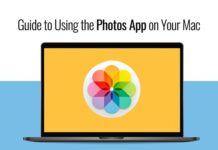ERP software provides businesses with a host of management tools. It streamlines operations, automates tasks, integrates data systems, facilitates customer satisfaction and fosters improved decision making processes.
Provides a suite of business management tools including CRM, help desk, content management, project management and more. With its user-friendly interface and high marks for usability.
Intacct
Sage Intacct is an ERP software system designed to streamline accounting workflows and processes. With its user-friendly interface, AI tools, automation features, real-time insights and user access controls it enables finance teams to work more efficiently than ever. Furthermore, Sage Intacct’s scalable features support growing businesses.
With powerful reporting tools that provide companies with data-driven decisions and keep them competitive, its customizable dashboards give users a clear view of their financial health. You can use this software to track key metrics, optimize financial processes and forecast revenue streams.
Intacct’s reporting tools offer a host of customizable options, including the ability to display graph points over data tables for easier comparison across time periods. Furthermore, Intacct offers multidimensional views of your business finances with predefined dimensions representing departments, items and employees – as well as multidimensional charts featuring these views.
Sage Intacct offers integrations with Salesforce, Avalara and American Express that allow users to synchronize CRM data with financial records. Furthermore, its open API enables custom integrations as necessary – not forgetting it’s available as cloud-based solution so you can access it from any device!
An effective ERP should seamlessly integrate with other applications used by the business, such as customer relationship management (CRM), e-commerce platform and payroll systems, so as to coordinate workflow across departments using one centralized database. This will allow each department to see real-time information that’s shared between applications, with an easily understandable unified interface for users to connect apps together and understand their functionality. Furthermore, robust business intelligence capabilities should automate repetitive tasks while real-time visibility into a business’s financial state should make this an excellent option for small and midsized enterprises that wish to enhance operations while competing against larger rivals.
Acumatica
Acumatica is a cloud-based ERP solution designed to offer maximum flexibility and accessibility, helping to streamline many different business functions such as financial management, customer relationship management (CRM), inventory/distribution management and project accounting. Scalable to support a growing company. Users also find Acumatica user-friendly as it has an intuitive user interface which is simple to learn and use – plus its open architecture enables customization as well as adding applications.
Acumatica offers businesses in different industries numerous features that make life easier, including tracking sales tax across jurisdictions and automating accounts payable processing. Furthermore, Acumatica can handle multiple currencies and tax rates effectively – an ideal solution for global enterprises. Furthermore, Acumatica boasts powerful reporting tools as well as a centralized database which makes managing data and information simpler than ever.
Acumatica ERP platform is highly configurable and scalable, featuring a centralized database and powerful APIs that can integrate into other systems and apps. Deployed both on-premise and in the cloud, its flexible licensing model supports growing numbers of users with license changes at any time.
User-friendly design ensures a quick learning curve for employees, and it can be used on any modern browser device. This increases employee productivity while decreasing external IT support requirements, while integration is easy between apps and a wide variety of mobile functions are provided. Pricing options range from single application suite to multi-tenant cloud solutions and pricing is determined based on modules selected rather than per user.
SYSPRO
SYSPRO ERP system boasts industry-specific functionality, making it suitable for small to midsize businesses (SMBs) in both distribution and manufacturing. Available as a cloud version with modules customizable to your unique requirements, companies typically purchase it through value-added resellers who facilitate installation, training and post implementation support services as well as troubleshooting capabilities.
Financial accounting modules are at the core of every ERP system, and SYSPRO does not disappoint in this respect. With accounts payable (AP), general ledger, inventory control, sales/purchase order entry and bank reconciliation among its many financial modules; bank reconciliation; fixed assets tracking and more all available through this solution – but unfortunately lacking payroll capabilities nor integration with third-party HR solutions.
SYSPRO offers robust manufacturing and distribution functionality, but in addition offers AI/ML technologies which can automate data analysis to uncover patterns and trends and increase profitability. In addition, its Customer Relationship Management (CRM) system can be accessed via mobile apps with real-time reports provided.
SYSPRO ERP software provides manufacturers and distributors with an effective tool for increasing efficiency, accuracy and profitability. SYSPRO’s intuitive user-friendly design provides detailed insight into your business operations while its flexible subscription model can accommodate growing companies of any scale.
Microsoft Dynamics 365 Business Central
ERP tools provide businesses with an essential technology tool, streamlining processes and providing real-time reporting on real data. Through automated tasks and synchronized operations, departments can work more efficiently while improving customer service levels and increasing productivity rates. ERP software also reduces costs by eliminating redundant systems and cutting manual labor expenses.
To select an ideal ERP system, it’s essential to identify key users and documenting any significant business problems, which will serve as the basis of any problem-solving features within your ERP tool. Once this step has been completed, evaluate potential candidates against your list of criteria: such as number of functions, scalability, customization and cost considerations.
Microsoft Dynamics 365 Business Central is an effective cloud ERP solution designed for small businesses that offers easy usage. It integrates accounting with other Microsoft products while also being available as an on-premises option, and can even be combined with additional tools to meet unique business requirements.
Odoo ERP system offers businesses a self-service option with its open source platform, providing businesses with freedom to select applications tailored specifically for them and build an ERP system tailored specifically to their unique requirements. Tools available through Odoo include e-learning, live chat, customer relationship management (CRM), sales inventory invoicing product lifecycle management financials human resources.
ERP tools do more than streamline finances and automate accounting tasks; they also assist businesses with optimizing inventory levels, managing projects, and providing better service to customers. In addition, managers can use them to track performance and gain insights into the health of their businesses – such as making informed decisions to increase revenues while decreasing expenditures; using one central database to coordinate all team members or even manage complex projects with multiple team members involved simultaneously.
SAP S/4HANA Cloud
SAP S/4HANA Cloud is a real-time ERP suite offering real-time analytics, improved planning and forecasting, faster business execution, an intuitive user interface (SAP Fiori) for easy use and reduced training times, mobile access and encryption protocols to secure data protection as well as compatibility with Java and SQL versions of all modern versions – an excellent choice for companies upgrading from older systems, yet costly and requiring an IT team for maintenance purposes.
SAP provides its solution as a managed service, featuring backup, disaster recovery, and security features. SAP handles technical operations for this software as well as updates and system maintenance; users pay monthly fees based on user count and computing power reserved to run it; centralized management reduces IT costs while users can easily adapt as their needs change.
Standardizing business processes is an effective way for organizations to reduce upgrade time and costs while streamlining operations. Unfortunately, however, it doesn’t offer as much customization flexibility than other options, meaning customers may experience difficulty transitioning away from systems they’ve customized themselves.
SAP S/4HANA Cloud can be implemented either as a hosted or on-premise solution depending on customer requirements. Hosted solutions are managed by SAP and can be accessed from any device – ideal for small to medium businesses with limited IT resources; on-premise solutions provide greater control and are best used by large organizations with strict compliance regulations and established business processes.









